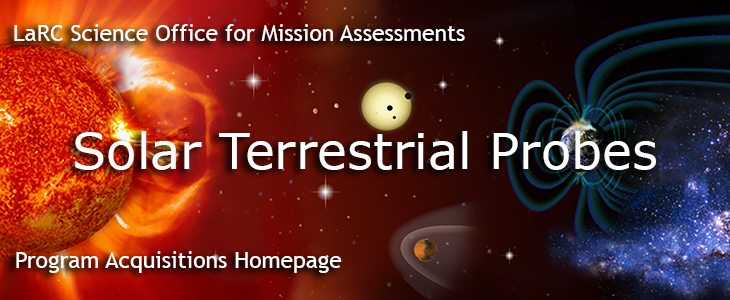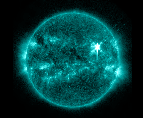
Solar Terrestrial Probes Program.
Solar-Terrestrial Probes Program

Missions within this program improve our understanding of fundamental physical processes that exist throughout the universe. Our stellar atmosphere contains rapidly flowing plasma-the solar wind-that creates a cavity in the galaxy called the heliosphere, which extends hundreds of times further than the distance between the Sun and the Earth. Because the Sun's output is highly variable in location, intensity, and time, the near-space environment of the Earth and other planets is profoundly dynamic, and hosts numerous phenomena that can be examined in detail by instruments on spacecraft. We have in essence a laboratory in our own backyard for examining fundamental processes seen at other planets and in other stellar settings. STP missions address unsolved scientific questions about critical physics that determines the mass, momentum, and energy flow within the interconnected Sun-heliosphere-Earth system. The knowledge gained from the focused science approach of the STP missions is critical to advancing Heliophysics science.
STP missions currently in operations include the following:
STP missions currently in operations include the following:
| Thermosphere, Ionosphere, Mesosphere, Energetics, and Dynamics (TIMED)-2001 (Extended) | Explores the Earth's Mesosphere and Lower Thermosphere (60-180 kilometers up), to understand the transfer of energy into and out of these regions and the basic structure that results from the energy transfer into the region. |
| Hinode (Solar B)-2006 (Extended) in partnership with Japan and the United Kingdom | Studies the generation, transport, and dissipation of magnetic energy from the photosphere to the corona to record how energy stored in the Sun's magnetic field is released, either gradually or violently, as the field rises into the Sun's outer atmosphere. |
| Solar Terrestrial Relations Observatory (STEREO)-2006 (Extended) in partnership with France, Switzerland, United Kingdom, Germany, Belgium, DOD | Traces the flow of energy and matter from the Sun to Earth with two space-based observatories. Reveals the 3D structure of coronal mass ejections and the reasons why they happen. STEREO observations are used for space weather forecasting by NOAA. |
| Magnetospheric Multiscale (MMS)-2015 in partnership with Austria, France, Japan and Sweden | Consists of four identically instrumented spacecraft that will use Earth's magnetosphere as a laboratory to study the microphysics of three fundamental plasma processes: magnetic reconnection, energetic particle acceleration, and turbulence. |
- Responsible NASA Official: Washito Sasamoto
- Page Curator: SOMA Web Support
- Document Initialized: 06.03.2016
- Page Last Modified: 06.30.2021
